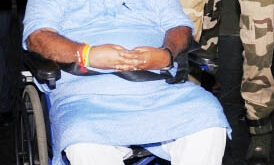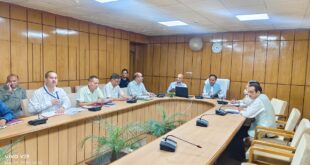In the quiet corridors of history, knowledge has always flowed like a great river —
beginning as a trickle of curiosity in the minds of our ancestors, gaining volume through
centuries of observation, thought, and experimentation, and finally merging into the vast
ocean of today’s scientific and technological landscape. We often imagine technology as a
modern phenomenon, born in laboratories filled with silicon chips, quantum processors,
and satellites orbiting the Earth. Yet these are merely the latest chapters in humanity’s long
and complex story of innovation. The foundations of this story are deeply rooted in the
ancient literature of India, where ideas about the cosmos, the human mind, mathematics,
medicine, architecture, metallurgy, and agriculture were not merely recorded as dry facts
but poetically embedded into the cultural fabric, making them both accessible and sacred.
In the Indian tradition, the pursuit of knowledge, or vidya, was never an isolated intellectual
exercise divorced from life’s moral and spiritual dimensions. It was holistic, intended to
uplift both the individual and the community, to ensure harmony between human ambition
and the natural order. The ancient thinkers recognized that a tool in the wrong hands could
destroy as easily as it could create. They saw that curiosity without conscience could lead to
imbalance, and therefore every form of vijnana — scientific knowledge — was anchored in
dharma — ethical responsibility. In our age of hyper-connectivity and instant innovation,
this holistic vision often fades into the background. We chase speed, efficiency, and scale,
sometimes without pausing to ask the most fundamental questions: For whose benefit? At
what cost? Is it in harmony with the larger rhythms of life?
When we turn the pages of India’s ancient texts, we discover not just a repository of facts
but a living dialogue across centuries — a conversation between poet-philosophers,
scientists, and spiritual seekers. The Vedas, composed over three millennia ago, are often
considered purely spiritual scriptures. Yet woven into their hymns are precise observations
of astronomy, ecology, and acoustics. The Rigveda contains references to the solar cycle, the
changing seasons, and planetary motions, while the Samaveda is, in essence, a manual of
sound resonance — principles that modern acoustics and sound engineering continue to
study. The chanting patterns described, with their attention to pitch, vibration, and echo,
are in their own way early explorations of wave physics. The Atharvaveda ventures into
subjects that touch on medicine, metallurgy, and even proto-engineering, describing the
preparation of herbal remedies, the forging of metals, and the construction of protective
structures.
The Upanishads, those luminous philosophical treatises, go even deeper, exploring
consciousness, perception, and the nature of reality itself in ways that parallel modern
neuroscience and cognitive science. They describe how reality is filtered through the mind
(manas) and senses, anticipating the idea that what we perceive is not the world as it is, but
the world as our mind interprets it. The metaphors used — of light passing through colored
glass, or the moon’s reflection in rippling water — could just as easily belong in a lecture on
optical illusions or brain imaging.
As we move forward in time, we encounter the Arthashastra, written by Kautilya
(Chanakya) around the 3rd century BCE. Far from being only a treatise on statecraft, it is an
encyclopedia of economic strategy, urban planning, foreign policy, espionage, and yes, even
cryptography. In its meticulous instructions for coded communication, we find the
intellectual ancestor of modern encryption algorithms. Its urban planning guidelines —
specifying road widths, drainage systems, market placements, and security measures —
resemble today’s sustainable city design frameworks. In fact, the emphasis on integrating
economic activity with environmental safeguards could teach our modern urban planners a
thing or two about resilience and self-sufficiency.
The medical literature of ancient India stands as one of its most remarkable contributions to
human civilization. The Charaka Samhita, a foundational text of Ayurveda, offers systematic
knowledge of diagnostics, pharmacology, and preventive healthcare. It presents the human
body as a complex, interconnected system in which physical, mental, and environmental
factors must be balanced — an approach now echoed in integrative and holistic medicine.
The Sushruta Samhita goes further, detailing over 300 surgical procedures, including
cataract removal, skin grafting, and fracture management, centuries before these became
part of Western medicine. Sushruta’s descriptions of surgical instruments, sterilization
techniques, and postoperative care reveal a methodology as scientific as any in the modern
medical world, though expressed in the poetic precision of Sanskrit verse.
Agriculture, too, was elevated to the status of a science. Surapala’s Vrikshayurveda is a
treatise on horticulture that discusses seed preservation, soil classification, irrigation
methods, and pest control. The instructions for grafting, for the preparation of natural
fertilizers, and for the timing of planting based on lunar cycles show an awareness of
biodiversity and sustainability that aligns closely with the United Nations’ Sustainable
Development Goals. In an era when industrial farming has depleted soil health and
endangered ecosystems, these ancient insights offer models for regenerative agriculture.
Rasashastra, the alchemical and metallurgical tradition of India, bridges the worlds of
chemistry, pharmacology, and metallurgy. It documents chemical techniques for extracting
metals, purifying minerals, and synthesizing medicinal compounds. The processes of
heating, distillation, sublimation, and condensation described in these texts would be
familiar to any modern chemist, though today’s laboratories use stainless steel rather than
earthenware or copper vessels. The philosophical dimension of Rasashastra — seeing
transformation in matter as a mirror of transformation in consciousness — adds a layer of
meaning absent from purely mechanistic science.
Underlying all these diverse disciplines is a shared philosophical foundation. In ancient
India, technology (yantra-vidya) and science (vijnana) were not detached from ethics (niti).
The Sanskrit concept of rta — cosmic order — suggested that every innovation should align
with the natural balance of the world. The use of weapons, for example, was bound by strict
ethical codes. Even in the Mahabharata, the deployment of powerful astras (divine
weapons) is limited by rules: they cannot be used against non-combatants, they must be
employed only in proportion to the threat, and some could be invoked only once. Large-
scale constructions such as temples, irrigation reservoirs, and stepwells were conceived not
as monuments to human ego but as harmonies between human need and natural landscape.
Knowledge was considered a sacred trust, a vidya daan — a gift of learning — to be shared
for collective welfare. In contrast, modern intellectual property systems often
commercialize and restrict knowledge, turning it into a commodity rather than a shared
heritage.
And yet, despite the centuries that separate us, there is a deep kinship between those
ancient pursuits and today’s technological ambitions. The twenty-first century has given us
tools our ancestors could not have dreamed of: artificial intelligence capable of learning and
adapting, biotechnology able to edit genomes with precision, nanotechnology building
machines at molecular scales, quantum computing solving problems beyond the reach of
classical algorithms, and space exploration that extends human presence into the solar
system and beyond. These tools carry immense promise, but also immense peril. Without
guiding principles, the same algorithms that help diagnose disease can be used to
manipulate opinion; the same genetic editing that cures illness can be turned to eugenics;
the same satellites that monitor climate can be used for destructive surveillance.
The parallels between ancient insights and modern innovations are striking. Artificial
intelligence, in many ways, mirrors the concept of Buddhi, the discriminative intelligence
described in Indian philosophy. The difference is that Buddhi is inseparable from viveka —
ethical discernment — whereas AI lacks intrinsic moral sense and must rely on human-
imposed ethical frameworks. Genetic engineering is, at its core, an extension of what
Vrikshayurveda taught: selecting, grafting, and nurturing plants for desired traits. Modern
sustainable urban planning echoes the layouts of ancient cities like Mohenjo-Daro and the
prescriptions of the Manasara Shilpa Shastra, which emphasized ventilation, water
management, and communal spaces. Ancient stepwells and canal systems are, in spirit, the
IoT-enabled smart irrigation systems of their time, using human ingenuity to monitor and
regulate water resources.
From these parallels emerge enduring lessons. Sustainability must be the first priority — in
ancient systems, the regeneration of resources was built into the design. Ethics should be
embedded in every stage of innovation, not appended as an afterthought. Development
must remain community-centric, involving those whose lives it will most directly affect. And
disciplines should not be siloed: the ancient Indian scholar was often at once a
mathematician, poet, astronomer, physician, and philosopher.
There are concrete case studies that demonstrate the continuing relevance of ancient Indian
knowledge. Wootz steel, famed for its strength and flexibility, was produced in India and
exported to Damascus, where it became the basis for the legendary Damascus blades. Its
unique microstructure has been the subject of modern materials science research, with
potential applications in aerospace and nanotechnology. The Surya Siddhanta, an
astronomical text, contains calculations of planetary distances and orbital periods that are
remarkably close to modern measurements, despite being composed long before telescopes.
Many medicinal plants mentioned in the Charaka Samhita — from Ashwagandha to Guduchi
— are now part of clinical trials for anti-cancer, anti-viral, and anti-inflammatory drugs.
To fully integrate ancient wisdom with modern capability, we must act deliberately. Indian
Knowledge Systems should be embedded into STEM education, not as nostalgic add-ons but
as frameworks for holistic problem-solving. Artificial intelligence should be trained not only
on datasets but also on ethical models derived from classical texts. Satellite imagery and GIS
mapping could be used to locate and revive ancient water systems, bringing them back into
service for drought-prone regions. Blockchain could be applied to preserve traditional
medicinal knowledge, ensuring it remains accessible while preventing exploitation.
As we stand at the cutting edge of technology, it is worth remembering that the sharpest
blade needs the steadiest hand. Ancient literature offers us that steadiness — a reminder
that technology is a servant, not a master; a tool for harmony, not conflict. Bridging today’s
innovations with yesterday’s wisdom is not nostalgia; it is necessity. The past is not behind
us; it is beneath us, the very foundation upon which the future will rise. In recognizing this,
we honor not only the brilliance of our ancestors but also our responsibility to those yet to
come — to ensure that the river of knowledge flows clear and life-giving, from its ancient
springs to the boundless sea of tomorrow.
By Dr. Bharat Pandey, Ranikhet
 National Warta News
National Warta News

